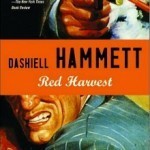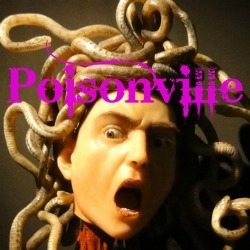Matt Rees's Blog - Posts Tagged "noir-fiction"
Best First Paragraphs in Crime Fiction: Part 1
 If you have a lot of time to waste, you never judge a book by its cover. But don’t try telling me you don’t judge it by its first paragraph.
If you have a lot of time to waste, you never judge a book by its cover. But don’t try telling me you don’t judge it by its first paragraph.What makes a great first paragraph? And which are the greatest? We all have favorites, some of which have become clichéd –– as happens to anything, whether it’s the best of times or the worst of times, or if you grew up in a family that was unhappy in its own way. See what I mean?
In general it’s hard to beat Hemingway’s opening to “The Sun Also Rises” for laying out the narrator’s character, as well as the character being described: “Robert Cohn was once middleweight boxing champion of Princeton. Do not think that I am very much impressed with that as a boxing title, but it meant a lot to Cohn.”
But what about crime fiction? Over the next few weeks, I’m going to look at some of the best first lines and paragraphs in the genre. Next week, we’ll do a little Chandler (how did you guess?) and then we’ll be on to Simenon, who was a nasty enough man to write perfectly bitter downbeat prose from the very start of his books.
Let’s begin, though, with the man who in many ways beats them all: Dashiell Hammett.
I bet you think I’m going to talk about “The Maltese Falcon,” which in the first paragraph describes Sam Spade as looking “rather pleasantly like a blond Satan.”
But I’m not.
No, we’re going to have a quick gander at the opening of “Red Harvest,” Hammett’s first novel, in which his Continental Op heads to a corrupt small town. It starts this way:
I first heard Personville called Poisonville by a red-haired mucker named Hickey Dewey in the Big Ship in Butte. He also called his shirt a shoit. I didn’t think anything of what he had done to the city’s name. Later I heard men who could manage their r’s give it the same pronunciation. I still didn’t see anything in it but the meaningless sort of humor that used to make richardsnary the thieves’ word for dictionary. A few years later I went to Personville and learned better.
For the rest of this post, read The Man of Twists and Turns.
Published on December 15, 2011 03:36
•
Tags:
crime-fiction, dashiell-hammett, detective-fiction, first-paragraphs, mysteries, noir-fiction, style, writers, writing
Best First Paragraphs in Crime Fiction: Part 2
 I’m writing this in a plain office in the corner of a building that was described by the realtor as “exclusive,” though it doesn’t exclude despondent ultra-Orthodox Jews panhandling for cash, plumbers who break all the pipes you hadn’t called them to fix, or the cheerful lady who lets her dog pee in the elevator. There’s the hum of heavy traffic from the road below and a view across the valley of brake lights on a highway where no one ever seems to move. The air is clear enough up here that I usually only smell me, sweating through the desert heat, except when the garbage truck empties the trashcans and sends up a rotten fruit ripeness, or when the khamsin blows and I can smell the dirt on the hot wind. There’s a mosquito in here, but the bastard isn’t friendly enough to show himself. When he does, I’ll do what people in the Middle East do best. There are already spots of my blood across the whitewash where his brothers and sisters felt the thick side of my fist.
I’m writing this in a plain office in the corner of a building that was described by the realtor as “exclusive,” though it doesn’t exclude despondent ultra-Orthodox Jews panhandling for cash, plumbers who break all the pipes you hadn’t called them to fix, or the cheerful lady who lets her dog pee in the elevator. There’s the hum of heavy traffic from the road below and a view across the valley of brake lights on a highway where no one ever seems to move. The air is clear enough up here that I usually only smell me, sweating through the desert heat, except when the garbage truck empties the trashcans and sends up a rotten fruit ripeness, or when the khamsin blows and I can smell the dirt on the hot wind. There’s a mosquito in here, but the bastard isn’t friendly enough to show himself. When he does, I’ll do what people in the Middle East do best. There are already spots of my blood across the whitewash where his brothers and sisters felt the thick side of my fist.If that sounds like a spoof, you surely know who I’m caricaturing. We decided last week that you couldn’t do much better than the opening paragraph of Hammett’s “Red Harvest” for an introduction to the narrative voice, narrator, place and tone of the entire novel. But if anyone could beat it, we’d have to look at Raymond Chandler.
The grumpy god of the gumshoe genre claimed not to have much time for the
idea of a classic in crime writing. In one of his essays, he wrote that contemporary writers who aimed for historical fiction, social vignette, or broad canvas would never surpass “Henry Esmond”, “Madame Bovary”, or “War and Peace”. Crime writers, on the other hand, would easily be able to
devise a better mystery than the ones detailed in “The Hound of the
Baskervilles” or “The Purloined Letter”. “It would be rather more difficult
not to,” he wrote.
Still, the poet with the pipe (okay, no more quirky names for Ray) proved
himself wrong. Or rather he proved that he was right not to focus so much
on the mystery element and, instead, to build a mysterious atmosphere and a sardonic sense of humor. From the opening paragraph.
This is how he starts a long 1950 short story called “Red Wind”:
There was a desert wind blowing that night. It was one of those hot dry
Santa Anas that come down through the mountain passes and curl your hair
and make your nerves jump and your skin itch. On nights like that every
booze party ends in a fight. Meek little wives feel the edge of the carving
knife and study their husbands’ necks. Anything can happen. You can even
get a full glass of beer at a cocktail lounge.
Like the opening paragraph of “Red Harvest,” this gives us all the elements
we’d expect. It also tells you a lot about the narrator and his lifestyle.
The booze parties, and the sense of being gypped at the cocktail lounge.
But the opening paragraph which might be said to define an entire genre ––
and the sub-genres of attempts to copy the true representatives of the
genre, and also to parody it –– starts Chandler’s 1949 novel “The Little
Sister”:
Read the rest of this post on my blog The Man of Twists and Turns.
Published on December 21, 2011 23:12
•
Tags:
crime-fiction, dashiell-hammett, mysteries, noir-fiction, philip-marlowe, raymond-chandler
Poisonville: Song of the crooked hoboes
 My Poisonville project produces music about crime fiction. Some of the songs are about my books, some about the work of greats like Chandler, and others are collaborations with contemporary writers. This is the title song of the project, the album, the band. It's based around Dashiell Hammett's first novel "Red Harvest." At the start of the book, Hammett's narrator, a detective called the Continental Op, says that he "first heard Personville called Poisonville by a red-haired mucker named Hickey Dewey." Later, he says, he heard the name pronounced that way by people who didn't also called their shirt a "shoit." The novel shows us why Personville deserved the name. The song was co-written by The Talented David Brinn who plays the accordion. I do the rest. I aimed for a sound like a bunch of crooked hoboes playing in a Poisonville speakeasy.
My Poisonville project produces music about crime fiction. Some of the songs are about my books, some about the work of greats like Chandler, and others are collaborations with contemporary writers. This is the title song of the project, the album, the band. It's based around Dashiell Hammett's first novel "Red Harvest." At the start of the book, Hammett's narrator, a detective called the Continental Op, says that he "first heard Personville called Poisonville by a red-haired mucker named Hickey Dewey." Later, he says, he heard the name pronounced that way by people who didn't also called their shirt a "shoit." The novel shows us why Personville deserved the name. The song was co-written by The Talented David Brinn who plays the accordion. I do the rest. I aimed for a sound like a bunch of crooked hoboes playing in a Poisonville speakeasy.[soundcloud url="http://api.soundcloud.com/tracks/4069..." params="auto_play=false&show_artwork=true&color=ff7f00" width="100%" height="166" iframe="true" /]
Published on May 09, 2012 03:00
•
Tags:
crime-fiction, dashiell-hammett, music, mysteries, noir-fiction



